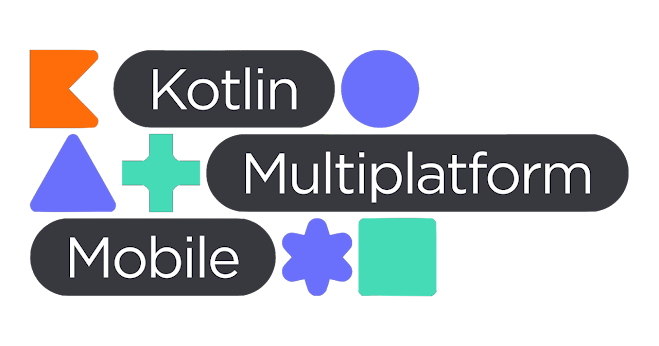Conquer Multiple Platforms with One Codebase: Introducing Kotlin Multiplatform
Do you ever dream of building an app that seamlessly runs on Android, iOS, and even desktops? Well, with Kotlin Multiplatform (KMP), that dream can become a reality. KMP, developed by JetBrains, empowers you to create cross-platform applications by sharing core functionalities between different platforms.
Imagine writing the business logic of your app once and deploying it on various platforms. KMP lets you do exactly that. This translates to significant time savings and reduced maintenance headaches. But KMP doesn't stop there. It also offers the following benefits:
- Native Performance: KMP applications leverage platform-specific features and libraries, ensuring a smooth and responsive user experience.
- Simplified Codebase: Say goodbye to duplicated code for different platforms. KMP promotes code reusability, keeping your project clean and manageable.
- Faster Development: With a shared codebase, development cycles become shorter as you're not rewriting functionalities for each platform.
So, what kind of applications are ideal for KMP? Here are some prime examples:
- Mobile Applications: Share core functionalities like networking, data storage, and authentication between your Android and iOS apps.
- Desktop Applications: Develop applications with a common codebase that runs on Windows, macOS, and Linux.
KMP offers different mechanisms for code sharing:
- Common Code: Write code that can be used on all targeted platforms.
- Platform-Specific Code: Develop code specific to individual platforms using expect-actual declarations.
Getting started with KMP is easier than you might think. Popular IDEs like Android Studio provide plugins to streamline the development process. Additionally, Jetpack libraries are increasingly leveraging KMP, making it even more developer-friendly.
Whether you're a seasoned developer or just starting your cross-platform journey, KMP is definitely worth exploring. Its ability to streamline development while maintaining native performance makes it a powerful tool for building modern applications.
Ready to dive deeper? Check out the official Kotlin documentation https://kotlinlang.org/docs/multiplatform-get-started.html and resources to get started on your first KMP project today!
Flutter v/s Kotlin Multiplateform
Flutter vs Kotlin Multiplatform: Choosing the Champion for Your Cross-Platform App
The world of mobile app development is brimming with frameworks promising to conquer multiple platforms with a single codebase. Two prominent contenders in this arena are Flutter and Kotlin Multiplatform (KMP). Both offer distinct advantages, and the choice between them depends on your specific project needs. Let's delve into the key differences to help you pick the champion for your app.
The Philosophical Divide:
- Flutter: This Google brainchild takes a unique approach. It utilizes its own rendering engine, Dart, to build a single codebase that translates into native experiences for Android and iOS.
- KMP: This JetBrains offering leverages the power of Kotlin. It allows sharing code for functionalities like business logic and data handling across platforms. However, UI development remains platform-specific (Swift for iOS, Kotlin for Android).
Development Speed:
- Flutter: With its hot reload feature, Flutter boasts blazing-fast development cycles. Changes are reflected almost instantly in the running app, allowing for rapid iteration and prototyping.
- KMP: While KMP offers some level of code reusability, development speed might be slightly slower compared to Flutter due to the need for platform-specific UI development.
Performance:
- Flutter: Since Flutter uses its own rendering engine, there's a slight possibility of performance overhead compared to native apps. However, for most applications, the difference is negligible.
- KMP: KMP shines in performance. By leveraging native UI components, KMP applications deliver a smooth and responsive user experience on par with native apps.
Learning Curve:
- Flutter: If your team is new to cross-platform development, Flutter might have a steeper learning curve. Developers need to learn Dart, a language specifically designed for Flutter.
- KMP: For developers already familiar with Kotlin (especially those with Android experience), KMP offers a smoother transition. Kotlin's syntax is similar to Java, making it easier to pick up.
Ideal Use Cases:
- Flutter: Flutter excels at creating apps with a unique and customizable user interface. It's ideal for MVPs, app prototypes, and applications where rapid development and a unified look and feel are priorities.
- KMP: KMP is a strong choice for performance-critical applications where a native feel is crucial. It's also well-suited for teams with existing Kotlin expertise looking to expand their app to other platforms.
The Final Verdict:
There's no one-size-fits-all answer. Consider your project's specific requirements. If development speed and a unique UI are paramount, Flutter might be the way to go. However, if performance and a native experience are top priorities, KMP could be the better choice.
Ultimately, both Flutter and KMP are powerful tools for cross-platform development. By understanding their strengths and weaknesses, you can make an informed decision and build a winning app for your target audience.

